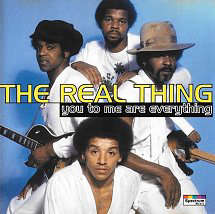
The Draconid meteor shower will peak tonight, meaning stargazers have the best chance of seeing some of its shooting stars if the skies are clear.
If the weather is cloudy, however, it should also be visible for the next two evenings.
But with meteor showers appearing in the night sky all year long, how can you tell your Draconids from your Orionids?
Each meteor shower has unique qualities.
The Draconids are unique because the shower is best seen in the early evening instead of late at night and can sometimes produce huge numbers of meteors every minute.
Its appearance early in the evening is down to where it originates in the night sky.
It appears to come from the constellation Draco, hence its name, which is highest in the sky at nightfall.
Tonight, the best time to catch the meteors will be between 7pm and 7.30pm.
Meteor showers generally follow in the wake of passing comets or meteors; the showers are the debris hitting our atmosphere and burning up.
The Draconids come from a comet called 21 P/Giacobini-Zinner, named after the French astronomer Michel Giacobini who discovered it in 1900.
This particular meteor can be hit or miss. Sometimes, very few meteors will appear in the sky and in other years, it will cause "meteor storms".
In 1933, NASA says 500 Draconid meteors were seen per minute in Europe.
Tonight's show is not expected to be as chaotic as that, but it's worth keeping an eye on the sky.
Read more: 'Most impressive comet of the year' set to burn across the night sky
There are major meteor showers every few months, with many peaking between now and December.
Here's what to look out for as the nights get longer. Although the meteor showers might be visible for much longer, we have listed the "peaks" below, which are the dates there will be the most activity - and therefore the biggest chance of spotting some meteors.
The Orionids will peak overnight on 21-22 October and are associated with Halley's Comet.
Halley is thought to be the most famous comet because its discovery marked the first time astronomers understood comets could be repeat visitors to our night skies, according to NASA.
Read more from science and tech:
Loyalty testers will now catch out your cheating boyfriend
Lab-grown food may be a step closer to being approved in UK
Nobel Prize for medicine goes to microRNA scientists
The Taurids will peak in our hemisphere overnight on 12-13 November.
Its meteors are known to be "very slow", according to the Royal Observatory Greenwich, and the meteor shower as a whole sticks around in the sky for a long time because the debris stream causing the shower is very spread out.
The Leonids will peak on 18 November, and "is one of the more prolific" meteor showers of the year, says the Greenwich observatory. The meteors appear to come from the head of the constellation Leo the Lion, hence the name.
Once Christmas party season is in full swing, there are two lots of meteor showers to watch on your walk home.
Firstly, the Geminids will peak overnight on 14-15 of December - its meteors tend to be bright but with few trails following behind.
Then, to take us into Christmas is the Ursids, a sparse shower that comes from the comet 8P/Tuttle.

(c) Sky News 2024: Early evening meteor shower peaks tonight: How to tell your Draconid meteors from your Taurids


 Russia trying to create 'mayhem' on UK streets, MI5 boss warns
Russia trying to create 'mayhem' on UK streets, MI5 boss warns
 Woman, 22, found dead in Belfast as murder investigation launched
Woman, 22, found dead in Belfast as murder investigation launched
 That box full of wires you've kept for years could help avert a looming crisis
That box full of wires you've kept for years could help avert a looming crisis
 Tributes to 'keen runner' who died after Cardiff half marathon
Tributes to 'keen runner' who died after Cardiff half marathon



